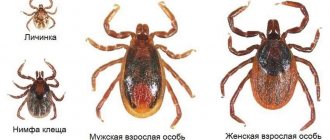The key to good physical condition and activity in dogs is normal temperature. In many ways, this indicator is an indicator of the health and internal well-being of the animal.
If you notice a sharp deterioration in your pet’s condition, then you need to urgently go to the veterinary service.
Temperature in dogs
Body temperature is not a constant value in dogs. It can change during the day or depending on the age and sex of the animal, its physiological state, the intensity of physical activity, and environmental conditions.
However, there is such an indicator as “normal temperature”, which includes an interval rather than a single digit.
In dogs, the norm is considered to be a temperature of 37.5 to 39 degrees, but even in this case, age and size are taken into account:
- for decorative species – 39-39.5;
- for large dogs – 37.4-38.3;
- for average – 37.5-39;
- for puppies – 38.2-39.3.
Based on these indicators, you can determine the average temperature of your pet and take appropriate measures if it increases or decreases.
Temperature of small breed dogs
As a rule, the normal temperature of small, medium and large dogs differs significantly. Thus, in adult small dogs this indicator of physiological state is 38.50°C - 39.0 0°C. In puppies of these breeds it is even higher – up to 39.50°C. In addition, normal temperature in small breed dogs depends not only on age, but also on external factors.
Temperature of dogs in the heat
A high temperature in a dog can be a consequence of overheating and even heatstroke. Our pets tolerate heat much more difficult than people. The physiology of dogs is such that their body thermoregulation occurs completely differently from that of humans. Self-cooling in dogs occurs through the mouth, tongue, paw pads and nose. In hot weather, any dog will overheat much faster than a person, so it is better to protect your pet from high air temperatures. And, if a dog’s temperature of 39.50°C at a certain age and for a particular breed may be the norm, then a temperature of 40°C and above is already an indicator of overheating or heat stroke, if no other reasons for the dog’s high temperature are found.
Average normal values
Each breed has its own standardized temperature parameters. However, veterinarians have identified a certain dependence of this value, based on the characteristics of the breed, the age of the pet and its overall dimensions. The table below shows the temperature ranges that are considered “normal” for various breeds :
| Age and size of the dog | Temperature values (°C/from and to) |
| Young individual: | |
| small breed | 38.5–39.3 |
| medium sized breed | 38.5–39.0 |
| large breed | 38.0–39.0 |
| Adult: | |
| small breed | 38.5–39.0 |
| medium sized breed | 37.5–39.0 |
| large breed | 37.5–38.5 |
The presence of deviations from the norm can be associated not only with the disease of the animal . A standard set of reasons that can affect the temperature of a dog’s body:
- strong physical activity;
- a sharp state of fear;
- labor pains in bitches;
- increase in temperature during estrus in females.
When should you take your dog's temperature?
It is not necessary to constantly measure your pet's temperature; the temperature of breeding puppies is checked according to a special schedule. But knowing what the dog’s body temperature is is important so as not to miss a critical situation.
The temperature is constantly monitored in the following cases: before and after vaccinations, during pregnancy, before and after childbirth.
A series of suspicious symptoms that appear in a dog requires an urgent temperature measurement to prevent possible illness.
Pay attention to factors:
- refusal to eat;
- increased thirst;
- lethargy;
- pale tongue and gums;
- pallor of mucous membranes;
- apathy, drowsiness;
- dull, faded coat;
- discharge from the nose, eyes;
- difficulty infrequently urinating;
- dark color of urine;
- muscle spasms;
- hot dry nose;
- cramps, vomiting and diarrhea.
A wet and cold or, conversely, hot nose does not determine the dog’s temperature, but many owners are sure of the opposite. You can find out what your pet's temperature is by measuring it. If your dog is sick, it makes sense to keep a “temperature diary” and record the results in the morning and evening.
Hyperthermia
Hyperthermia is a change in body temperature that exceeds the upper limit of normal.
There can be many reasons for high temperature, ranging from stress to neoplasms, let’s consider them in more detail:
- Stress does not cause serious concern; when it is removed, t returns to normal. Stress can be caused by transporting an animal, strong and prolonged noise, a change of owner, or a large number of people in the room wanting to play with the dog.
- Viral and infectious diseases - when foreign microorganisms are introduced, a protective reaction occurs, which is accompanied by an increase in temperature.
- Non-infectious diseases (vascular and heart diseases, joints, sepsis, hormonal imbalance, etc.).
- Poisoning/intoxication of the body.
- Allergic reactions - an increase in body temperature is the body's immune response to an allergen.
- Teething in puppies (not always).
- Overheating or hypothermia of the body.
After childbirth, complications are possible, this will be indicated by an increase in temperature up to 40 - 41 C.
Symptoms of hyperthermia
The symptoms of hyperthermia are nonspecific and can manifest themselves in a number of other diseases that are not accompanied by a change in temperature.
- lethargy, apathy (the animal is not physically active);
- dry and hot nose (not only when t changes, for example, after waking up);
- chills (with a significant increase in t, the dog shudders, this is manifested by trembling of the whole body, less often of individual parts);
- appetite is weak or absent;
- severe thirst (the animal strives to reduce the heat inside with large amounts of water);
- the dog strives for a dark, cold place;
- vomiting/diarrhea.
An increase in temperature, despite everything, is considered a good sign, since the body exhibits a protective reaction.
How to measure a dog's temperature at home?
To carry out the measurement, use a thermometer (mercury gives more accurate readings, but an electronic one shows the result faster). It is administered rectally (into the dog's anus). Here is an algorithm for how to measure a dog’s temperature correctly:
- Maine Coon
- Domestic iguana
- How much does a raccoon cost?
- Interesting facts about cats
- Cute dog breeds
- The richest animals
- Calm your pet, lay him on his side, stroke his belly. The dog should relax.
- The tip of the thermometer is lubricated with greasy ointment (baby cream is usually used for this purpose).
- The animal's tail is raised, the thermometer is slowly inserted into the rectum (2-2.5 cm for large individuals, 1-1.5 cm for small ones).
- While the measurement is taking place, talk to your pet, stroke it, and treat it with your favorite treat.
- After completing the measurement (5 minutes for mercury thermometers, 30-40 seconds for electronic ones), carefully remove the thermometer, praise the animal, and write down the data obtained. Wash the thermometer and hands with warm soapy water, and if necessary, disinfect with an alcohol solution.
Thanks to this algorithm, you can easily find out the condition of your pet. Handle the dog carefully and calmly, do not frighten it. The pet should know that measuring with a thermometer is a simple and painless procedure.
How to check without a thermometer?
To measure temperature readings without a thermometer, veterinarians advise using 1 of the 4 methods below:
- Touch your pet's paw pads and ears. If some kind of infection has entered the dog’s body and caused a rise in temperature, then you will find hot paws and ears of the animal. This is due to the accumulation of a large number of blood vessels in these areas. When an infection occurs, blood flow to the paws increases.
- Touch the groin or armpit area. As the temperature rises, the groin and armpits become unnaturally hot. In addition, there may be slight swelling in these areas.
- Checking the condition of the gums. In a healthy animal, the gums should always be moist and have a pink tint. If your pet's mouth is dry and pale, we can confidently say that he has a fever. And this is a direct indicator of infection entering the body.
- Prolonged trembling of the limbs of the animal’s body indicates a sharp drop in body temperature. If you feel feverish, immediately measure your dog’s temperature.
Can you tell by the nose?
Many also believe that a characteristic sign of high fever is a hot, dry nose. However, this is largely a misconception, since a dry nose does not directly determine whether a pet is sick or not.
Periodic drying and heating of the tip of the nose may be due to the following reasons:
- excessively active games or physical activity;
- general fatigue of the dog’s body due to a long walk on the street;
- a warm and dry room in the apartment (especially in the winter months);
- after sleep, metabolism is slowed down and moisture secretion is reduced;
- severe nervous tension;
- the dog’s body’s reaction to a sudden change in weather;
- hormonal changes in a pet during estrus or after birth.
The reasons listed above should not be accompanied by potential signs of illness - refusal of food and water, diarrhea, etc. If you observe several similar symptoms at the same time, then it is still worth checking your temperature.
Signs of high and low
The need to measure a pet’s temperature arises when the following uncharacteristic signs of a normal condition in an animal occur :
- refusal to eat and drink;
- lethargy;
- the presence of pale mucous membranes of the oral cavity and tongue;
- dry mouth;
- severe diarrhea or vomiting for 4-5 hours;
- the appearance of cramps throughout the body.
Important! If your pet has one or more of the above symptoms, then you should measure the temperature with a thermometer.
It is best to carry out the procedure using an electronic thermometer. You will get the result after 1.5-2 minutes. To obtain values using a mercury thermometer, it will be necessary to measure for 3-5 minutes. The increase/decrease in temperature is measured rectally.
Some reasons for fever
The temperature rises when heat transfer is disrupted or physically impossible, or when heat retention mechanisms are activated during its increased production. Most often, the temperature rises in response to the action of certain substances, they are called pyrogens. For example, pyrogens can be parts of bacteria, during an infectious disease, destroyed body tissues formed during injury or the disintegration of a tumor.
Also, substances to which the animal has an individual sensitivity, that is, an allergy, can raise the temperature.
For example, let's take piroplasmosis; with this disease, the temperature usually rises to 41-42 degrees. This reaction occurs due to the vital activity of the parasite and due to the rapid destruction of red blood cells. In this case, two types of pyrogens are formed: exogenous (the work of the parasite) and endogenous (destroyed cells).
Low temperature in a dog
A low temperature in a dog is also considered a deviation from the norm. This can happen, for example, after surgery, in which case you need to cover her warmly and be sure to consult a veterinarian. The body temperature of a pregnant dog can also change; before giving birth it drops by one degree compared to the norm (up to 37-37.5 ° C). The normal body temperature of a newborn puppy on the first day is also slightly lower than usual - 33-36 °C, about 15-20 days it will be about 36.5-38 °C. During this period, it is advisable to provide the puppy with optimal conditions. Even short-term hypothermia can lead to a worsening of his condition.
Causes of low temperature
Body temperature can drop for many reasons. There are 3 degrees of hypothermia:
- Light (up to 32 degrees)
- Moderate (up to 28 degrees)
- Severe (less than 28 degrees)
If the dog's body temperature is below 36.5 degrees, then it must be taken to a veterinary clinic immediately. Hypothermia can be primary (exposure to cold, immersing the dog in cold water) and secondary (serious injury, extensive blood loss).
The most common causes of low temperature:
- hypothermia of the body in the winter season;
- anesthesia during surgery;
- exhaustion;
- thermoregulation disorder in cases of serious injuries, such as traumatic brain injuries;
- diseases of the thyroid gland, kidneys, liver;
- poisoning.
Also, low body temperature can be observed in small puppies due to the imperfection of their thermoregulation system. For the time when the mother dog has left the babies, they must be placed under an infrared lamp or placed on a heating pad. If this is not done, the puppies begin to crawl in circles, become restless, feel cold, and feel abandoned.
The optimal temperature in the nest for newborns is about 30 degrees Celsius. Short-term hypothermia is not dangerous for puppies, but if the mother or the heating pad that replaces it is not present for a long time, they may die from hypothermia. As the babies grow, the temperature in the nest should gradually decrease. By 3 weeks, puppies begin to have their own thermoregulation system and they no longer need additional heating.
In pregnant bitches, the temperature begins to drop as labor approaches. On average, it drops to 36.9-36.6 degrees, which means that the puppies will be born within 24 hours. After the birth canal opens, the temperature returns to normal and even rises higher. Usually, by the time the last fetus is expelled, it ranges from 39 to 39.5 degrees. Some dogs do not change their temperature before giving birth, so watch closely for other signs as well.
In the last days of pregnancy, be sure to monitor your dog's behavior. Veterinarians advise measuring temperature 2-4 times a day so as not to miss the onset of labor.
Possible complications
Hyperthermia can have serious consequences for the body: disruption of the central nervous and digestive systems, changes in water-salt balance, dehydration, excessive stress on the heart, multiple organ failure.
The prognosis depends on the diagnosis and timely treatment of the underlying disease. If the dog survives 48 hours after the start of therapy, then in most cases it is favorable.
Symptoms
The best way to measure a dog's body temperature is to use a thermometer. If for some reason this is not possible, then pay attention to the visual signs of hypothermia:
- shiver;
- convulsions;
- pallor of the skin and mucous membranes;
- the animal seems cold to the touch;
- the dog is lethargic, constantly sleeps;
- unnatural behavior:
- the animal may hide, be aggressive, or, on the contrary, be too affectionate;
- breathing slows down, heart rate decreases;
- with severe hypothermia, the pupils stop responding to light;
- when the temperature drops critically, coma occurs.
If measures are not taken, complications may develop: acute renal or cardiovascular failure, bronchopneumonia, pancreatitis. Be sure to show your pet to a veterinarian, as without treatment he may die.
Signs of hypothermia
Low temperatures are more dangerous for animals, but they occur less frequently. There are 3 degrees of hypothermia:
- Light 32 – 37℃
- Average 28 – 32℃
- Heavy – below 28℃
External signs depend on the severity:
- muscle weakness;
- shiver;
- drowsiness;
- pallor of mucous membranes;
- cool paw pads;
- rare pulse;
- low blood pressure;
- weak breathing and heartbeat;
- dilated pupils.
At t 28℃ and below, interruptions in the functioning of the heart and nervous system begin. The dog needs emergency veterinary care.
First aid
In case of hypothermia, you need to take the animal to a veterinary clinic as soon as possible.
Before or during the trip, provide first aid to the animal:
- Take your dog into a warm room. When you are away from home, you can go to a store or get into a warm car;
- Wrap your pet in a warm blanket or any heat-insulating material;
- Offer your dog a drink of warm water. The use of hot liquids is strictly prohibited, as this may negatively affect the animal’s well-being;
- Give your pet a light warming massage.
After this, immediately take the dog to the nearest veterinary clinic.
Treatment
Now let's talk about how to raise your dog's body temperature. After the examination, the veterinarian may recommend leaving the dog in the hospital. This is usually done in cases where the animal’s temperature has dropped significantly. The dog is often prescribed IVs. The method of passive superficial and active internal warming of the animal is used. If there is a slight drop in body temperature, the animal is covered with heating pads and a blanket to prevent further heat loss. In case of severe hypothermia, these procedures are supplemented with intravenous administration of warm solutions, gastric lavage, and warming enemas. Once the body temperature reaches 36.7 degrees, the animal is given medications to relieve attacks of pain.











